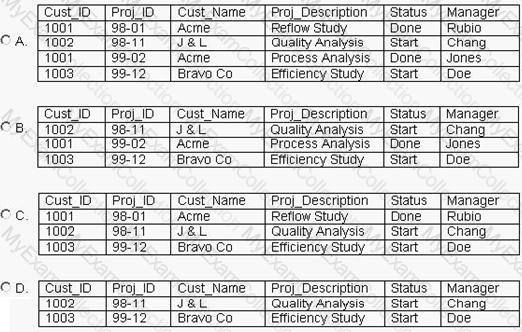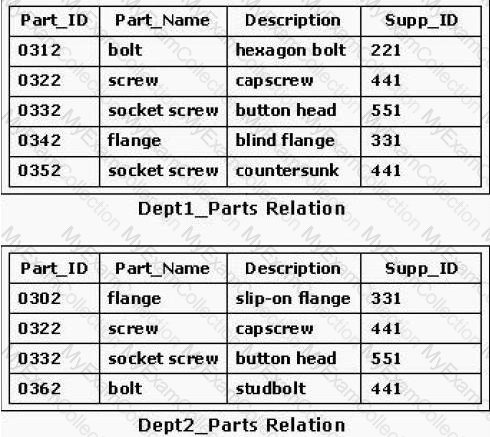Consider the Project relation shown in the exhibit as well as the following SQL statement: Which of the following tables shows the Project relation after execution of this SQL statement?

The exhibit shows a table called Student Relation that tracks all information related to a students courses, professors and sites. What would be the consequence of removing all records for a student with the ID 1311?

What is the most important service provided by a database management system?
Consider the following table as well as the Dept1_Parts and Dept2_Parts relations shown in the exhibit: Which of the following relational algebraic expressions would result in the given table?



What improvement can be made to file-based databases to overcome their limitations?
The exhibit shows a relation for a company projects. Which candidate key(s) would best serve as the primary key for this relation?

Which component in the three-tier database architecture handles the data-processing and business logic?
Consider the Dept1_Parts and Dept2_Parts relations shown in the exhibit. Which of the following SQL statements would create a set difference of the two relations with the widest variety of Structured Query Language dialects?

Consider the following four database design activities:
1 - Design user views.
2 - Select a DBMS.
3 - Apply normalization.
4 - Determine entities.
Which choice shows the correct ordering of these activities, from first to last, by assigned numbers?
In which situation would the DBMS use a serial schedule to execute the transactions?
Consider the entity-relation (ER) diagram shown in the exhibit. When the logical database design phase is completed, which of the following is a valid DBDL description of the base relations for the ER diagram?
Consider the entity-relationship (ER) diagram shown in the exhibit. Which type of relationship between the two entities is shown?

Which relational algebraic operation is used to select specific columns (attributes) from a relation?
Which security technique limits access by unauthorized users to parts of an enterprise database?

